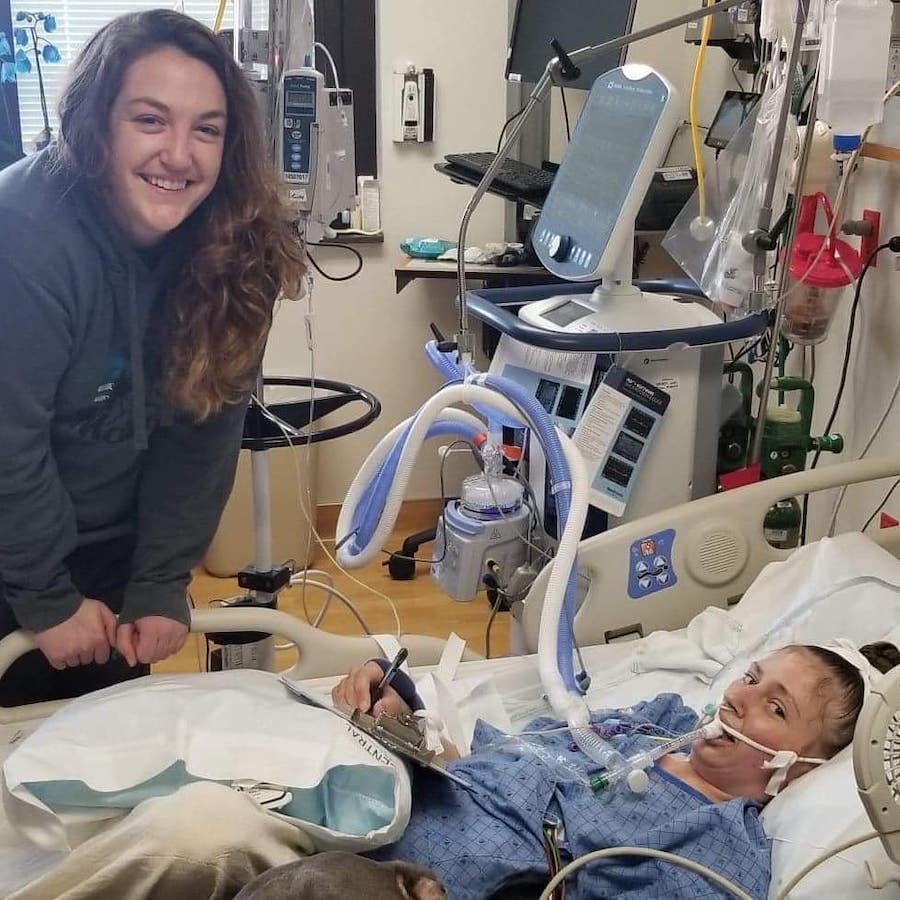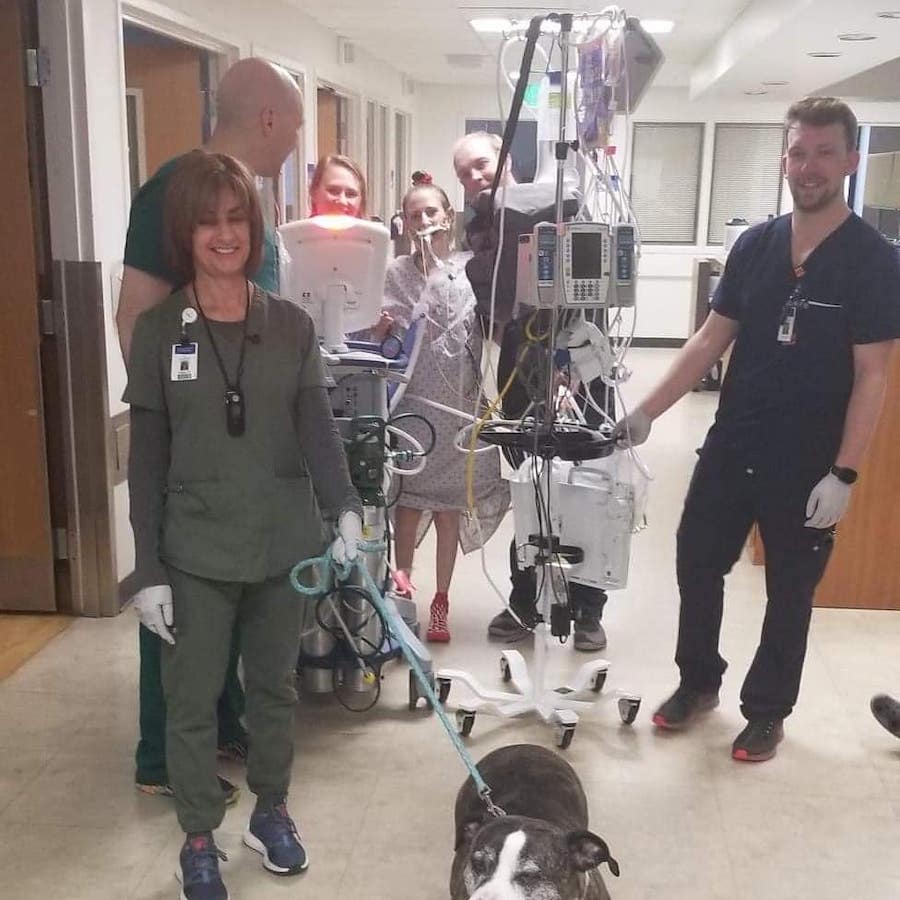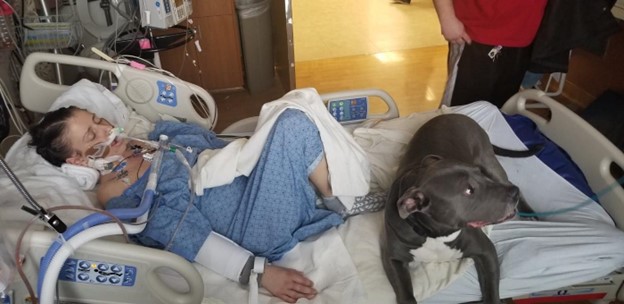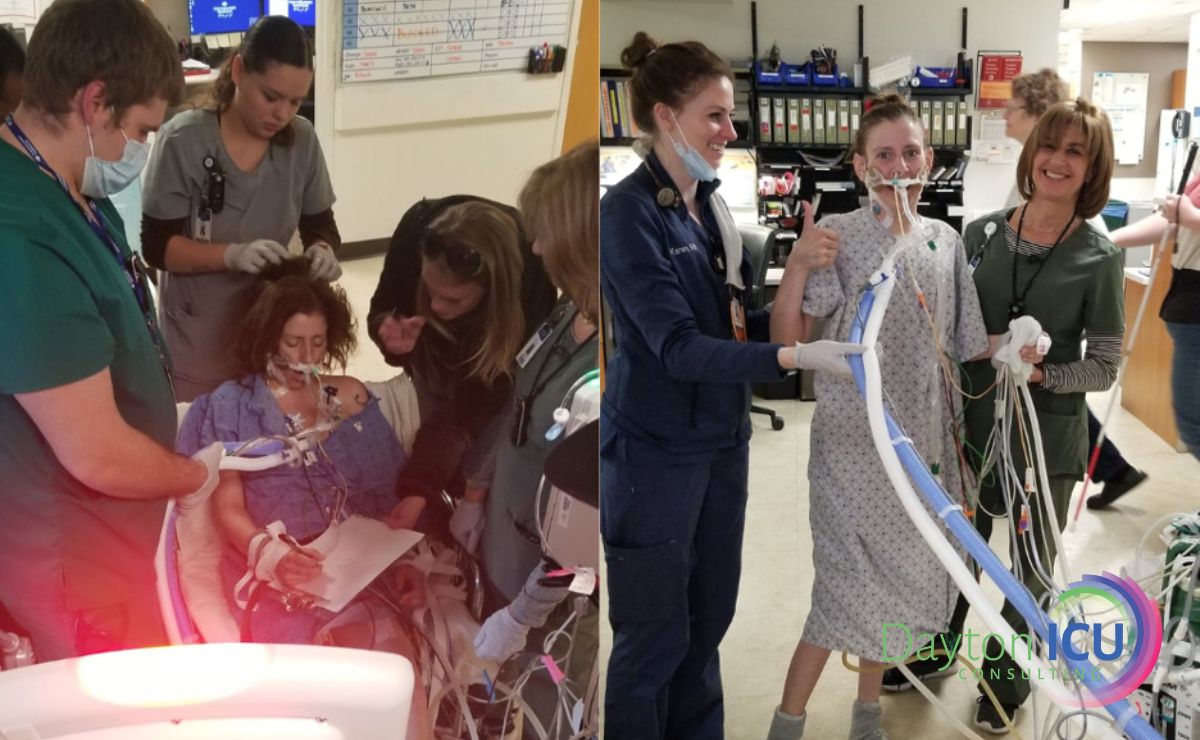More often than not, ICU patients today are subjected to unbearable bouts of sedation, immobility, and the inevitable delirium that accompanies a lack of evidence-based treatment.
Sadly, many of these patients don’t survive, and even more of them are robbed of their ability to thrive, both while they’re in the ICU, and after they’ve left the intensive care unit.
However, when evidence-based practices are understood by ICU team members, and applied accordingly, even the most agonizing ICU admissions can still have a silver lining.
That being said, while the case I’m about to document is disturbing and difficult to digest, it also does a great job of highlighting how evidence-based practices can dramatically improve ICU patient outcomes.
It involves a woman who learned first-hand how management of delirium in the ICU and early mobility in the ICU can literally save lives.
Her name is Megan, and this is her story.
How Management of Delirium in the ICU Saved Megan’s Life

Megan Wakley is a 32-year-old woman with a history of malnutrition, PTSD, and alcohol dependence, as well as benzodiazepine, marijuana, and tobacco use.
She was admitted to an outside hospital for ALPS (alcoholic leukopenic pneumococcal sepsis) and was promptly intubated and placed on mechanical ventilation.
She developed necrotic and cavitary pneumonia, septic shock, alcohol withdrawal, and ARDS (acute respiratory distress syndrome).
She then spent seven days deeply sedated and immobilized, and her condition continued to decline.
The ICU team that treated her started to discuss options, such as comfort care, with Megan’s family. As a result, the decision was made to transfer Megan to the Awake and Walking ICU.
Upon arrival to the Awake and Walking ICU, Megan was still sedated with midazolam and fentanyl, and on one vasopressor, with ventilator settings of assist control, a PEEP of 14, and a FIO2 of 60%.
Once the Awake and Walking ICU team knew Megan had stable oxygenation and hemodynamics with her current ventilator settings and vasopressor needs, they immediately looked at the big picture.
They recognized that Megan was in critical condition with septic shock and severe respiratory failure from necrotic and cavitary pneumonia and ARDS, and they identified the need to treat those conditions and prevent further complications.
In addition to her acute infection, Megan had significant risk factors for poor outcomes, such as ICU-acquired weakness and delirium, which could make her survival less likely.
With that said, let’s look at how Megan’s experience relates to some common afflictions for ICU patients, and how the ICU team members who treated her were able to mitigate these issues through an understanding of evidence-based practices.
ICU-Acquired Weakness
Megan was malnourished at baseline, which could double her length of stay and healthcare costs, as well as her chances of discharging to a care facility, further increasing her risks of ICU-acquired weakness and mortality.
Her development of sepsis and septic shock also put her at significantly higher risk of quick muscular atrophy and ICU-acquired weakness.
In addition, Megan had already spent seven days immobilized under sedation, and the muscle mass and use she had already lost could pose a threat to her survival.
Luckily, the ICU team that treated her understood that the more muscle and function Megan lost, the longer she would be on the ventilator, the more likely she was to die, and the more difficult rehabilitation would be.
At the same time, her quality of life could be impacted by her physical deficits for years to come.
That being said, they knew it was imperative to stop muscular atrophy and start rebuilding muscle mass and function immediately.
Delirium
Megan suffered alcohol withdrawal, septic shock, and experienced seven days of continuous sedation.
As a result of all these factors, her chances of silently suffering from traumatic delirium while sedated were immeasurably high.
Research shows that Megan’s baseline PTSD increased her risk of having post-ICU PTSD, and her ICU care team feared that although she appeared to be sleeping, she was probably repeatedly and vividly reliving the traumatic events that caused her initial PTSD, which would likely worsen her psychological function and mental health after the ICU.
The Awake and Walking ICU team was panicked about Megan’s delirium, especially considering they were aware that evidence shows for every one day of delirium, her risk of death would increase by 10 percent.
In addition, they knew that studies show delirium doubles the risk of death in the hospital, and there’s evidence to show that it triples the risk of death within six months after being discharged from the hospital.
Moreover, they knew that evidence shows liberating her from sedation and delirium would be essential to improving her chances to survive and thrive.
Fortunately for Megan, her ICU care team was also aware that by applying the ABCDEF Bundle to Megan’s care, they could:
- Cut her risk of ICU readmission in half
- Reduce delirium and coma days by 25-50 percent
- Reduce physical restraint use by more than 60 percent
- Decrease the likelihood of hospital death within seven days by 68 percent
- Reduce her chances of being discharged to a nursing home/rehabilitation facility by 40 percent
Helping Megan to Remain Awake and Walking

Ultimately, their goal was to get Megan awake and walking on the ventilator so she could eventually walk herself out of the ICU and resume her life.
The first step toward such a goal was to perform a true sedation vacation.
Unfortunately, as they gradually decreased her doses of midazolam and fentanyl, Megan’s torturous hyperactive delirium was revealed.
She was agitated and active, fought her restraints to reach for her endotracheal tube, and was quickly able to bite through the tube, so she ended up requiring emergent re-intubation.
Induction sedation was given for the tube exchange and the team discussed their strategy moving forward.
Instead of considering the event a failed sedation vacation, they realized Megan’s delirium was an emergency.
They knew continuous deep sedation would exacerbate and prolong her delirium, and they were also aware of the fact that delirium is a life-threatening condition, so they formulated a plan to help Megan work through her delirium.
At this point, they realized that due to Megan’s baseline benzodiazepine use and prolonged midazolam course, she needed benzodiazepines.
On the other hand, they also knew that being deeply sedated with benzodiazepines such as midazolam would increase her risk of dying.
So, they decided to give her Klonopin through her feeding tube to help with anxiety and cover her benzodiazepine needs.
In addition, they decided to exchange midazolam for propofol and bridge to dexmedetomidine.
The ultimate goal was to ensure Megan was awake and alert enough to apply the main interventions for delirium, which include:
- Mobility
- Family involvement
- Real sleep (not sedation)
- Avoidance of delirium-causing medications
The ICU care team recognized that even though her family was present, they could not help her come back to reality if she was deeply sedated, and they knew mobility and real sleep would be impossible with sedation.
With these factors in mind, they used propofol and were then able to wean her down to just dexmedetomidine and attain a RASS score of 0 to +1.
As soon as she was calm and awake enough, while remaining within that RASS goal, they immediately had her up on her feet and walking.
Megan’s initial walks were clumsy, weak, and required support, and after each walk, she was exhausted and would immediately sleep.
Fortunately, dexmedetomidine and fentanyl were able to be discontinued. She remained delirious but her anxiety and agitation started to improve.
The next day, she started writing on a board, asking questions, such as “Where is my daughter?” and “Where is my dog?” so her family brought her dog in to help with her anxiety.

After a few days, her delirium was gone, she was able to be unrestrained, and her anxiety was managed with family, mobility, and low-dose Klonopin, at her request.
Her ARDS and cavitary pneumonia worsened and she required a chest tube for cavitary pneumonia and adjusted ventilator settings, including a PEEP of 18 and a FIO2 of 100% for the ARDS.
Inexplicably, in spite of all this, Megan was able to be free of sedation and delirium, and continued to walk.
If you want to learn more about Megan’s story, you can check out Episode 71 of my Walking Home From The ICU podcast.
How Did Things Turn Out for Megan?
Megan spent over a month on mechanical ventilation – an exceptionally long stretch compared to most patients in the Awake and Walking ICU.
Her lungs were severely damaged, and she did require a tracheostomy for night rest (a rare occurrence in the Awake and Walking ICU).
Due to the unknowns and fears of new COVID patients coming into the ICU for the first time, she was transferred to a long-term acute care hospital (LTACH).
She walked herself out of the ICU, independently breathing through her tracheostomy, and spent only a week in the LTACH before being decannulated and able to discharge home and be with her family.
Speaking to me as a guest on my Walking Home From The ICU podcast, Megan expressed her gratitude for being allowed to be awake and walking during her ICU stay, and her appreciation that she’s now home with her daughter and able to continue her life.
She firmly believes her life was saved as a result of being liberated from the terror of delirium and having the ability to be awake and alert during her critical illness.
Do you want to know more about how management of delirium in the ICU can drastically improve patient outcomes and working conditions in the intensive care unit in your hospital? If you’re ready to do what’s best for your patients, your ICU team, and your bottom line, we’re ready to help. We can walk you through the entire process, so please don’t hesitate to contact us.




